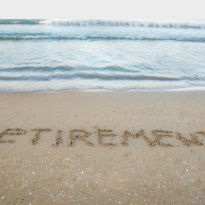Self invested pension schemes such as a self invested personal pension (SIPP) or a small self administered scheme (SSAS) can invest in wide variety of ways, depending on what the provider allows. However, care needs to be taken regarding the presence or otherwise of “tangible moveable property” in a SIPP or SSAS investment, says Stephen McPhillips, technical sales director, Dentons Pension Management Limited.
Let’s start by clarifying what is “tangible moveable property”?
Put simply, things that can be touched and moved are classed by HMRC as tangible moveable property. HMRC’s Pensions Tax Manual states:
“Tangible moveable property is things that can be touched and that are moveable rather than immovable property. It includes assets such as art, antiques, classic cars and also plant and machinery owned by a registered pension scheme.”
Such property, if owned (directly or indirectly) by an investment regulated pension scheme (such as a SIPP or SSAS), becomes “taxable property” and subject to tax charges on both the pension scheme member(s) in their personal capacity and the pension scheme itself (via a scheme sanction charge on the Scheme Administrator).
Taxable property also includes residential property which does not meet HMRC’s requirements in relation to mixed use residential and commercial property.
The tax charges can be significant and apply to the price paid for the taxable property acquired, any income (or deemed income) from the taxable property and also to any gains on its disposal.
Where might tangible moveable property arise?
As noted from the Pensions Tax Manual above, some assets are quite obviously things that can be touched and moved; works of art, antiques, classic cars, plant and machinery and also computers, desks, chairs and so on.
However, in the context of a SIPP or SSAS investment, there can be instances where an investment is made that gives rise to taxable property charges because it is not immediately obvious that the property is something, or contains things, that can be moved.
Given that there is no industry-wide “permitted investments list” covering SIPP and SSAS investments, paraplanners may find that different providers have different interpretations of HMRC’s Pensions Tax Manual and, in turn, may receive differing guidance on the subject.
What are some less obvious examples?
Mezzanine floors
Within the commercial property market in the UK, small to medium sized industrial units are commonplace. In fact, currently, there are so few of these coming onto the market, that it can prove challenging to get hold of one. However, where it is, or has been, possible for a SIPP or SSAS to acquire one of these properties, care needs to be taken. This is because this type of property (as well as others – such as warehouses and some offices) can contain within it a mezzanine floor.
There are varying definitions of mezzanine floor, and Wikipedia defines it as follows:
“A mezzanine is an intermediate floor in a building which is partly open to the double-height ceilinged floor below, or which does not extend over the whole floorspace of the building, a loft with non-sloped walls.”
The key question from a pension scheme’s perspective is whether or not this mezzanine floor is a permanent structure within the building. Often, such a floor isn’t a permanent structure within the building and it can be removed without causing damage to the surrounding building.
If the mezzanine can be removed in this way, then it represents tangible moveable (and hence taxable) property and it should be excluded from the SIPP or SSAS purchase and also from the subsequent rental income generated by the property.
Wind turbines
With such a proliferation of these around the country, it’s not surprising that providers are sometimes asked whether or not these can be owned in SIPP or SSAS without tax charges arising. Given that these are transported to, and erected on, the site they occupy, it seems reasonable to assume that they can be both touched and moved, making them taxable property. However, a SIPP or SSAS could own the land upon which they sit and receive rental income from the owner of the turbine. This also avoids any issues with the pension scheme generating power in its own right (which might otherwise give rise to tax charges from “trading.”)
Solar panels
These can contain attributes of mezzanines and wind turbines in as much that they might not be permanent structures and they are expected to generate energy. If these panels are integral to a building (and cannot be removed without causing damage to the building), then it should be possible to own them without tax charges arising. The rent paid by the tenant to the SIPP or SSAS should reflect the fact that the tenant is benefiting from the energy source in the building.
What steps should be taken to avoid tangible moveable property?
Every commercial property is unique. As a result, due diligence should be undertaken on a proposed property purchase in advance of it taking place. That due diligence may well highlight, for example, the fact that a mezzanine floor exists within a building, or that a building has solar panels.
Such due diligence work could represent time well spent in order to prevent unexpected and unwanted tax charges arising for the client at a later date.
[Main image: watt-a-lot-8GS8bmor8_A-unsplash]





























